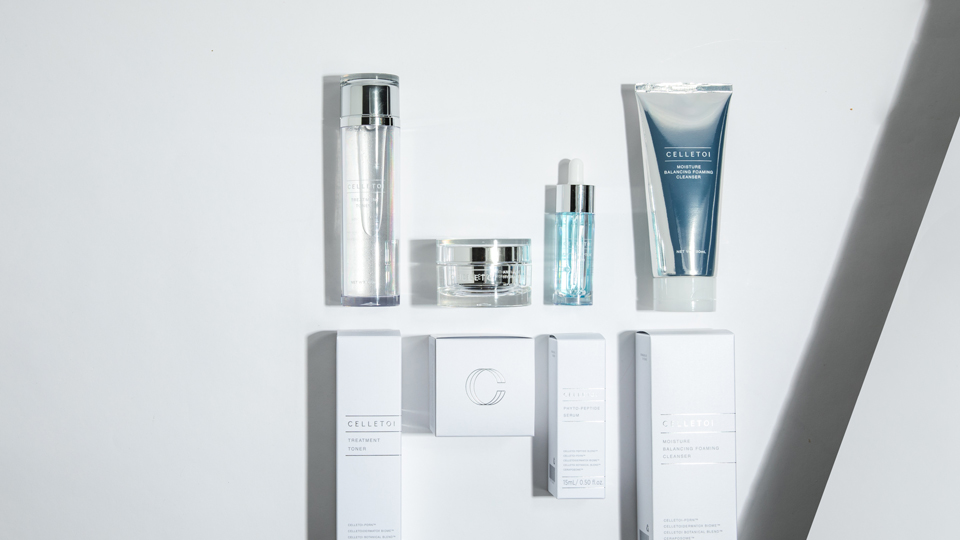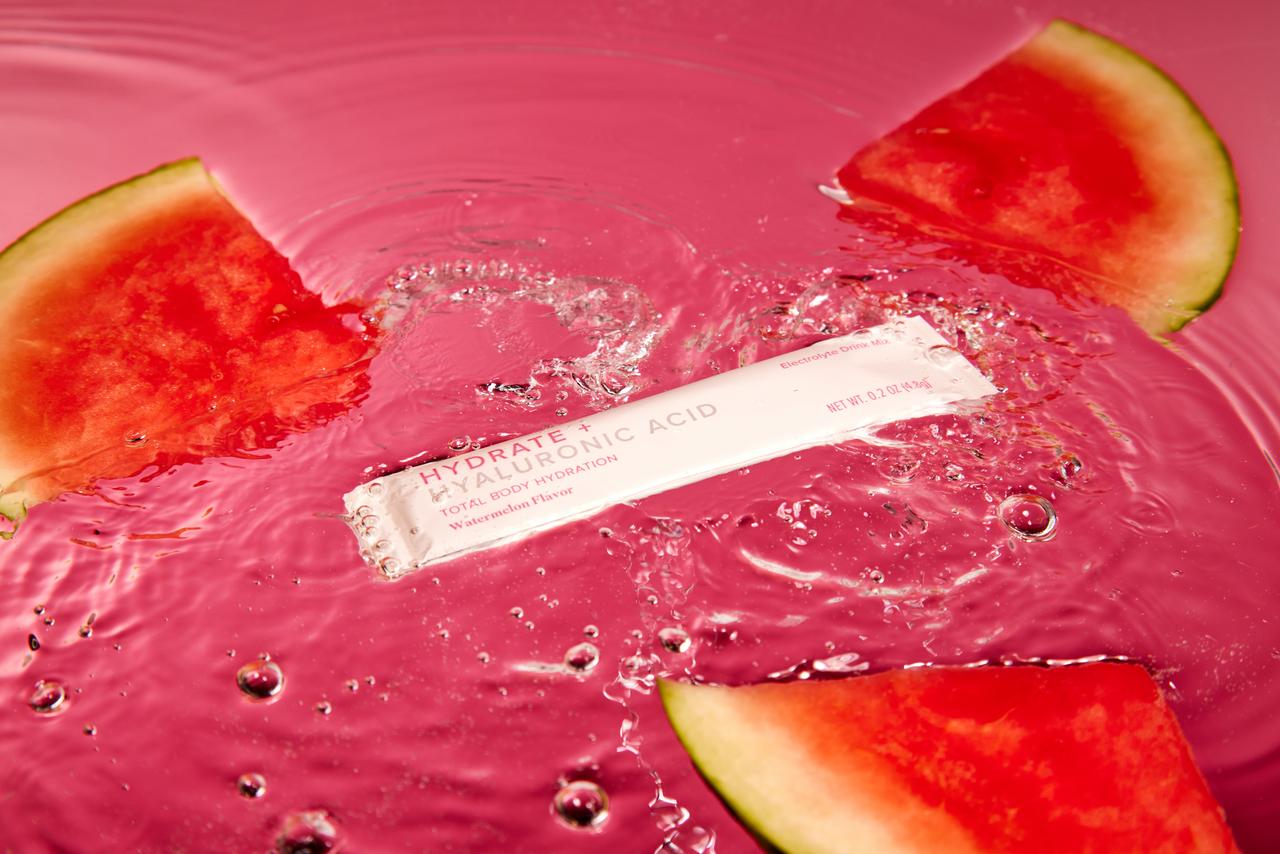Scientifically, there are multiple components to consider when assessing skin health. Some methods include tests for moisture and hydration, evenness of pigmentation, redness and fine lines and wrinkles. Others, more challenging to measure, include strength, elasticity, and inflammation. Clearly, skin health is quite complex.
This complexity isn’t surprising as the skin is also the largest organ in the human body and is constantly exposed to the external environment. Researchers estimate that environmental factors, including pollution, prolonged sun exposure and dry climates, can adversely affect skin tone or texture and accentuate fine lines and wrinkles (1). The effects of these factors are cumulative, adding up throughout our lifetime (2).
Luckily, the skin has a protective barrier called the stratum corneum. Every two weeks, skin cells from the stratum corneum are refreshed by new cells deep within the skin (3). When these new cells aren’t receiving sufficient nutrients, they are less functional, resulting in weakened skin tissue and a higher risk of environmental damage (3). This environmental damage then shows on our skin as we age. For the new skin cells to maintain a healthful appearance, skin cells should continue to receive nourishment (4).
To buffer against external insults to the skin and support skin cell health, we developed Celletoi, a four-product suite of skin care products. These products include Moisture Balancing Cleanser, Treatment Toner, Phyto-Peptide Serum, and Anti-Ageing Hydrate Cream.
All the Celletoi products contain our patented, state-of-the-art technology, Ceraposome, which works to support nourishment to new skin cells before they rise to the stratum corneum. Ceraposome decreases the density of the microencapsulated active ingredients in our Celletoi range. This property is achieved by complexing our innovative formulas in ceramides and lecithin. These two ingredients hold the active ingredients in each product together while increasing their liquidity for efficacious delivery.
While all products are essential to skin health, they work best when combined and used in sequence as part of your skin health ritual. Below we map out the four steps of Celletoi and highlight some of the crucial ingredients that make this product line so effective.
Step 1: Moisture Balancing Foaming Cleanser
To keep skin clean, the Moisture Balancing Foaming Cleanser bolsters the skin’s barrier. Indeed, skin dryness is one of the common problems caused by cleansers (5). To be used in the AM and PM, Moisture Balancing Foaming Cleanser removes makeup, waste and residue and serves to moisturise the skin.
- Ingredient spotlight: Quillaja Saponaria Bark Extract
Quillaja saponaria bark extract contains saponins, a class of chemical compounds that can act as natural surfactants (6). They also have a distinctive foaming characteristic and foam considerably when shaken in water creating a light, foamy texture forgiving on the skin and doesn’t cause irritation (6). These qualities make Quillaja saponaria bark extract an excellent ingredient for gentile foaming body washes and face cleansers.
Step 2: Treatment Toner
To be used after cleansing your face, this non-stick toner works to strengthen skin and replenishes moisture. This thin, soothing toner helps control the oil and moisture balance on your skin, preparing your compexion for the next steps of your beauty ritual.
- Ingredient spotlight: Ceramides
Ceramides, a family of waxy lipid molecules, are essential structural components of the skin like the stratum corneum (7). They are essential for maintaining skin barrier function and preventing trans-epidermal water loss (8). Dysfunctional skin barrier and dryness are associated with a reduced level of ceramide (9). Formulations like Celletoi that contain these unique lipids can improve disturbed skin conditions (10).
Step 3: Phyto-Peptide Serum
This plant-based serum contains a blend of peptides aimed at reducing the appearance of fine lines and wrinkles, improving skin elasticity and improving the appearance of skin tone and texture.
- Ingredient spotlight: Celletoi Peptide Blend
This blend is comprised of a plant-based collection of amino acids, vitamins, and six different peptides. Peptides are essentially a string of amino acids (the building blocks of protein). These short sequences of amino acids are ideal modulators of numerous proteins in the skin, including collagen, fibronectin, elastin and laminin (11). These proteins collectively serve to maintain the skin’s structural integrity. Multiple in vitro studies have shown that specific peptides induce collagen production (12-14), improve wound healing (14), and promote skin protein production (15). Together these peptides may help support the integrity of the skin, which can diminish skin laxity and wrinkles (11, 12).
Step 4: Anti-Ageing Hydrate Cream
This product deeply hydrates and moisturises the skin and helps protect against damage from daily toxins and pollutants. In addition, it helps soften and nourish the skin for a smooth and lifted complexion.
- Ingredient spotlight: Plant-based Stem Cells from Sea Holly and Sea Fennel
Celletoi’s plant-based stem cells are sourced from two coastal plants: Sea Fennel and Sea Holly. In vitro studies support the use of these plant-based stem cells for helping preserve a healthy epidermis and dermis and potentially prevent the visible signs of skin ageing (16-18). Moreover, the wax extracted from sea fennel is rich in antioxidant activity and total phenolic content (19, 20). Sea Holly contains lipids, amino acids, polyols, polyphenols and water-soluble sugars, which may also promote skin health (21, 22).
References
- Taylor CR, Stern RS, Leyden JJ, Gilchrest BA. Photoaging/photodamage and photoprotection. J Am Acad Dermatol 1990; 22:1-15.
- Godar DE, Urbach F, Gasparro FP, Van der Leun JC. UV doses of young adults. Photochem Photobiol 2003; 77(4):453-457.
- Murphrey MB, Miao JH, Zito PM. Histology, Stratum Corneum. 2020 Jul 3. In: StatPearls [Internet]. Treasure Island (FL): StatPearls Publishing; 2021.
- Lee T, Friedman A. Skin Barrier Health: Regulation and Repair of the Stratum Corneum and the Role of Over-the-Counter Skin Care. J Drugs Dermatol 2016 Sep 1;15(9):1047-51.
- Li Z. Modern Mild Skin Cleansing. JCDSA 2020; 10:85-98. doi: 10.4236/jcdsa.2020.102009.
- Martín RS, Briones R. Industrial uses and sustainable supply of Quillaja saponaria (Rosaceae) saponins. Econ Bot 1999: 53;302–311. doi.org/10.1007/BF02866642.
- Elias PM, Menon GK. Structural and lipid biochemical correlates of the epidermal permeability barrier. Adv Lipid Res 1991; 24:1-26. doi: 10.1016/b978-0-12-024924-4.50005-5.
- Harding CR. The stratum corneum: structure and function in health and disease. Dermatol Ther 2004; 17 Suppl 1:6-15. doi: 10.1111/j.1396-0296.2004.04s1001.x.
- Meckfessel MH, Brandt S. The structure, function, and importance of ceramides in skin and their use as therapeutic agents in skin-care products. J Am Acad Dermatol 2014 Jul;71(1):177-84. doi: 10.1016/j.jaad.2014.01.891.
- Coderch L, López O, de la Maza A, Parra JL. Ceramides and skin function. Am J Clin Dermatol 2003; 4(2):107-29. doi: 10.2165/00128071-200304020-00004.
- Reddy B, Jow T, Hantash BM. Bioactive oligopeptides in dermatology: Part I. Exp Dermatol 2012 Aug; 21(8):563-8. doi: 10.1111/j.1600-0625.2012.01528.x.
- Farwick M, Grether-Beck S, Marini A, Maczkiewitz U, Lange J, Köhler T, Lersch P, Falla T, Felsner I, Brenden H, Jaenicke T, Franke S, Krutmann J. Bioactive tetrapeptide GEKG boosts extracellular matrix formation: in vitro and in vivo molecular and clinical proof. Exp Dermatol 2011 Jul; 20(7):602-4. doi: 10.1111/j.1600-0625.2011.01307.x.
- Choi HI, Kim HJ, Park JI, Shin EH, Kim DW, Kim SS. Design and efficient synthesis of novel ascorbyl conjugated peptide with high collagen biosynthesis stimulating effects. Bioorg Med Chem Lett 2009 Apr 1;19(7):2079-82. doi: 10.1016/j.bmcl.2008.10.112.
- Maquart FX, Pickart L, Laurent M, Gillery P, Monboisse JC, Borel JP. Stimulation of collagen synthesis in fibroblast cultures by the tripeptide-copper complex glycyl-L-histidyl-L-lysine-Cu2+. FEBS Lett 1988 Oct 10;238(2):343-6. doi: 10.1016/0014-5793(88)80509-x.
- Katayama K, Armendariz-Borunda J, Raghow R, Kang AH, Seyer JM. A pentapeptide from type I procollagen promotes extracellular matrix production. J Biol Chem 1993 May 15;268(14):9941-4.
- Hameury S, Borderie L, Monneuse JM, Skorski G, Pradines D. Prediction of skin anti-aging clinical benefits of an association of ingredients from marine and maritime origins: Ex vivo evaluation using a label-free quantitative proteomic and customized data processing approach. J Cosmet Dermatol 2019 Feb; 18(1):355-370. doi: 10.1111/jocd.12528.
- Marchev AS, Georgiev MI. Plant In Vitro Systems as a Sustainable Source of Active Ingredients for Cosmeceutical Application. Molecules 2020 Apr 25; 25(9):2006. doi: 10.3390/molecules25092006.
- Georgiev V, Slavov A, Vasileva I, Pavlov A. Plant cell culture as emerging technology for production of active cosmetic ingredients. Eng Life Sci 2018 Jul 15; 18(11):779-798. doi: 10.1002/elsc.201800066.
- Alemán A, Marín D, Taladrid D, Montero P, Carmen Gómez-Guillén M. Encapsulation of antioxidant sea fennel (Crithmum maritimum) aqueous and ethanolic extracts in freeze-dried soy phosphatidylcholine liposomes. Food Res Int 2019 May;119:665-674. doi: 10.1016/j.foodres.2018.10.044.
- Generalić Mekinić I, Blažević I, Mudnić I, Burčul F, Grga M, Skroza D, Jerčić I, Ljubenkov I, Boban M, Miloš M, Katalinić V. Sea fennel (Crithmum maritimum L.): phytochemical profile, antioxidative, cholinesterase inhibitory and vasodilatory activity. J Food Sci Technol 2016 Jul;53(7):3104-3112. doi: 10.1007/s13197-016-2283-z.
- Parham S, Kharazi AZ, Bakhsheshi-Rad HR, Nur H, Ismail AF, Sharif S, RamaKrishna S, Berto F. Antioxidant, Antimicrobial and Antiviral Properties of Herbal Materials. Antioxidants (Basel) 2020 Dec 21;9(12):1309. doi: 10.3390/antiox9121309.
- Kikowska M, Kalemba D, Dlugaszewska J, Thiem B. Chemical Composition of Essential Oils from Rare and Endangered Species-Eryngium maritimum L. and E. alpinum L. Plants (Basel) 2020 Mar 30; 9(4):417. doi: 10.3390/plants9040417.





